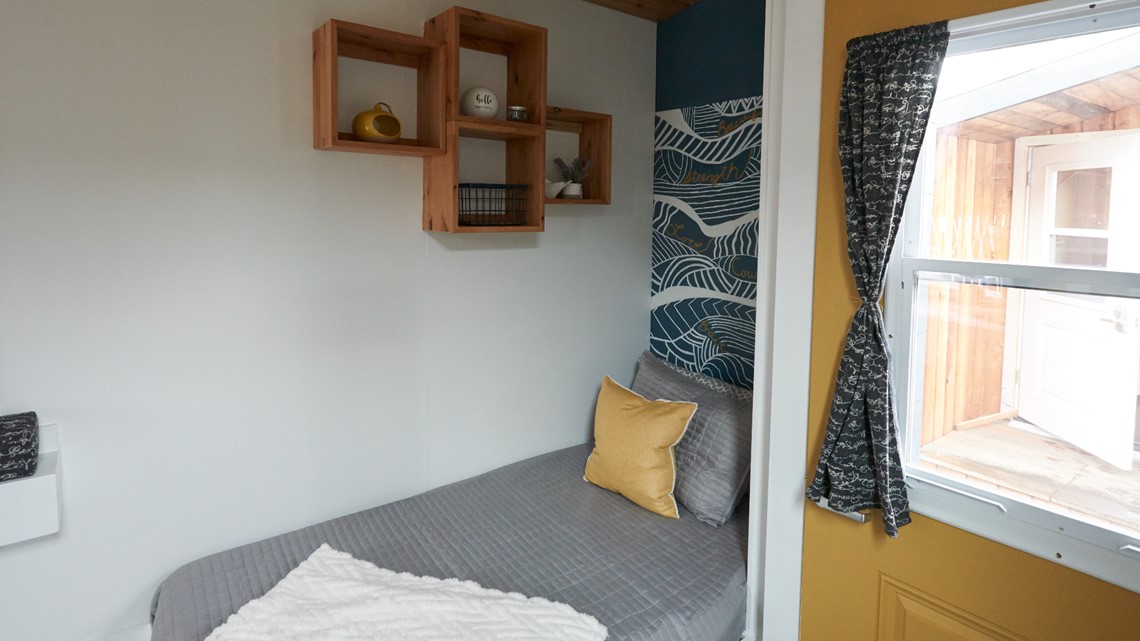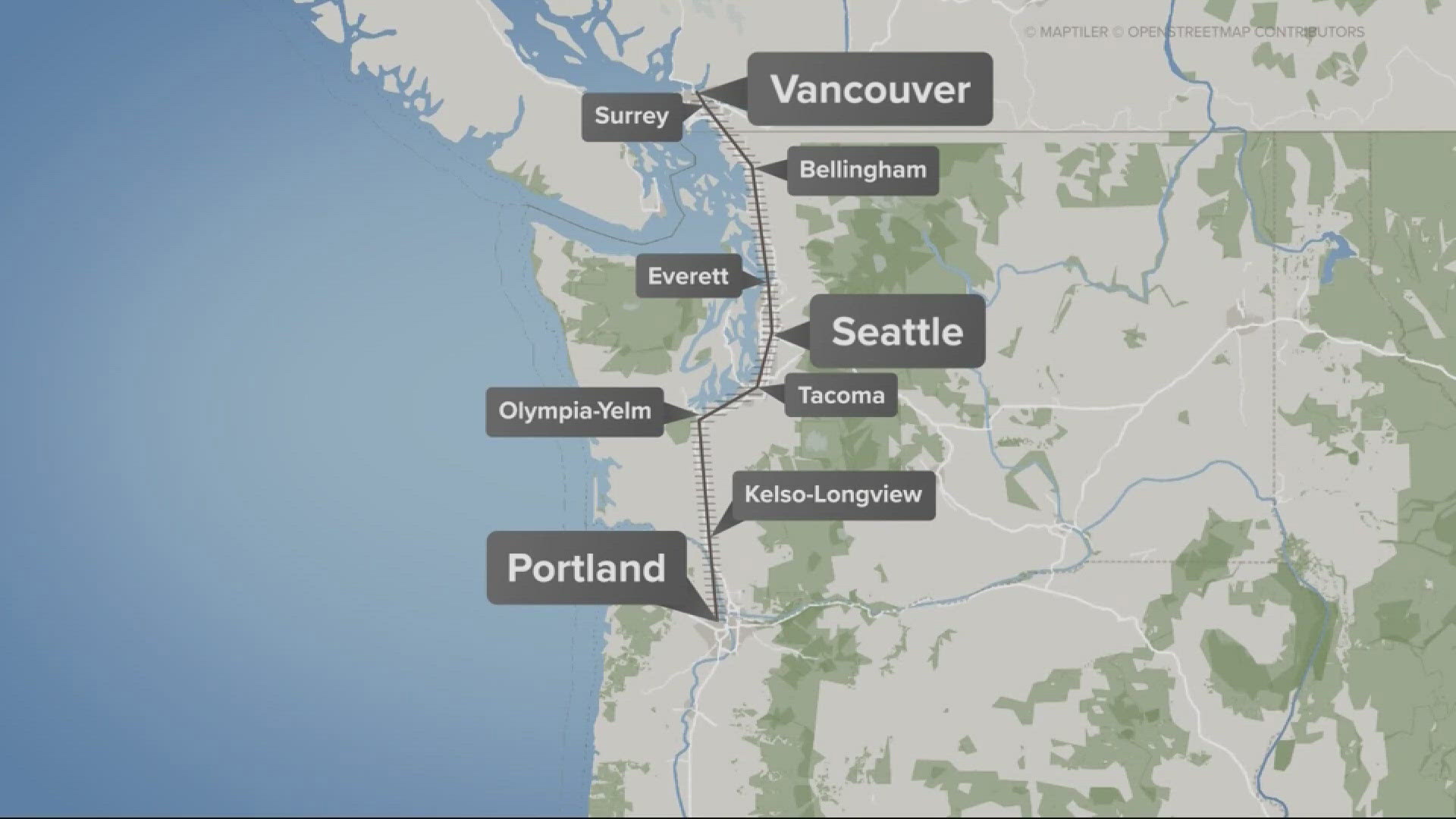PORTLAND, Ore — A team of Portland State University researchers have released a report examining the effectiveness of "tiny home" or "pod" villages as a means of addressing homelessness. The report includes a How-To Guide with tips for future village developers.
Portland is home to a number of existing villages with varying origins and governing structures, and the report comes at a time when the city’s government is leaning into the concept to try to address the growing homelessness problem.
Commissioner Dan Ryan’s office has spent the past year scouting locations for six new sites called Safe Rest Villages, which are scheduled to open later this year, though this study was not connected to that project.
The PSU study looked at six existing or former villages in the Portland area: Kenton Women’s Village, Hazelnut Grove, Dignity Village, Agape Village, St. Johns Village and the Clackamas County Veterans Village. Dignity Village is the oldest example of the concept in Portland, established in 2001.
Individual villages differ in terms of their size, configuration, available services and who manages them, so the report’s authors laid out three common factors to define a village: Private and individual shelter spaces with shared common facilities, a sense of community with shared agreements on behavior, and the ability for villagers to have some agency over their environment.
The study included interviews with more than 40 current residents across the six villages, along with input from the nonprofits that manage some of the sites and other residents who live near the sites. The authors recapped some of their findings at a news conference on Tuesday.
One of the biggest takeaways from the study was that village residents tend to be fairly happy with the village model; 86% of respondents said they were satisfied or very satisfied with their pod as a place to live, 69% said they were satisfied or very satisfied with their village, and 79% said they were satisfied or very satisfied with their neighborhood. However, 45% still reported facing food insecurity.


The report also found that local residential control is an essential piece of the puzzle, with 69% of respondents across all the villages stating that they should share in decision-making at the villages, making decisions in collaboration with staff and service providers.
“Overall, the feeling of having a voice in the village had major impacts on villager satisfaction and sense of community,” said Dr. Greg Townley, one of the study’s authors.
The report also found that the existing villages disproportionately served white residents, particularly white men. Only 17% of the villagers interviewed by the team identified as Black, Indigenous, or other people of color, even though those groups make up about 40% of Multnomah County’s unhoused population.
Participation in the study was voluntary, Townley said, so the disparity in the results could also happened because more white people volunteered for the interviews, but he said the results also aligned with what the team heard from village managers about disparities in the villages.
“We did find that villagers who are Black, Indigenous and other people of color reported lower levels of belonging and acceptance within their villages compared to white villagers,” he added.
LaQuida Lanford, who founded Afro Village, joined the press conference and said she was prompted to take action in part because she saw those same kinds of disparities while working as a case worker at the Urban League of Portland.
“Black people in particular didn’t feel accepted or wanted or welcomed in some of those previous spaces I was visiting – some of their shelters and existing villages at the time. I wanted to create a space and a community for Black folks and people displaced from their neighborhoods. But the idea was also to crate space for people from Portland and those newly arriving to Portland to participate in community.”
The report found that there were concerns among neighbors near villages, but the percentage of neighbors with concerns tended to drop once the villages were established.
“One of the top concerns that neighbors had before the village opened was the behavior of residents - that was at 44%,” said Dr. Marisa Zapata, another of the authors. “And once the village was actually open, that dropped to 29% - so seeing that the behaviors they were worried about weren’t actually playing out.”
Concerns about increases in trash did persist, she said, suggesting future village projects should emphasize setting up effective trash collection.
There was also broad support among neighbors for providing supportive services and housing as solutions to homelessness, she said, although a majority of neighbors mistakenly identified substance abuse as one of the leading causes of homelessness.


In terms of the physical configuration of new villages, the How-To Guide offers a few pointers. Smaller pods are easier to truck around, but if the site is secure and doesn’t need to be able to be moved quickly, residents tend to prefer slightly larger living spaces.
Residents also tended to prefer more organic site layouts, rather than a strict grid of pods, but the outside look of the pods tended to matter less than the ability of villagers to personalize the interiors of their own spaces.
Putting all the shared facilities in one centralized area can be highly efficient from a design standpoint, but the distance from each pod to the bathroom can quickly start to present access challenges, particularly for residents with disabilities.
There’s also an ideal village size in terms of the number of residents, in order to make sure everyone has access to support and to set up a fair distribution of work and duties.
“The number that we heard consistently is the ideal number of villagers was 20 to 30 people,” said Todd Ferry, one of the researchers.
That doesn’t mean it’s impossible for a village to be bigger, he added – Dignity Village, for example, has 60 residents – but it started off much smaller, and then gradually grew to that size while maintaining community cohesion.



